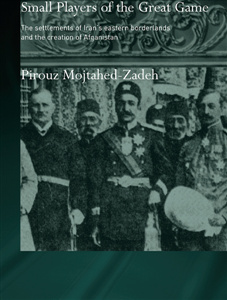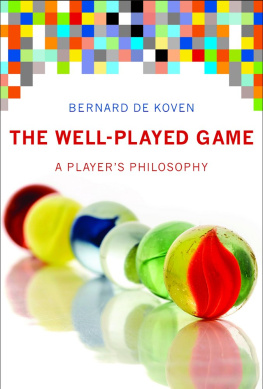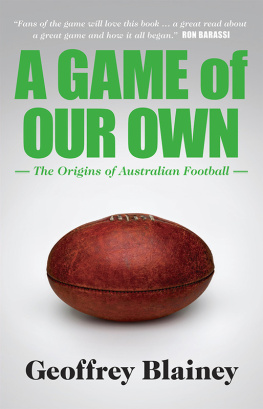ACKNOWLEDGEMENTS
Much has been said of Anglo-Russian rivalries of the nineteenth and twentieth centuries, including the Great Game of geopolitics played out by the two giants of those distant times, but historians and geographers have not elaborated on the role played by the smaller players in the game. One of the more important of these smaller players was the Khozeimeh Amirdom of Khorasan and Sistan. Most members of the present generation of its last ruling family live in London. Indeed, I have been fortunate to have known this family in London, and were it not for the exchange of information with them, this book would probably have never been started let alone completed. Moreover, it was with the cooperation of some members of the Khozeimeh family that
I published my book on the evolution of Eastern Iranian boundaries. That book was privately printed in 1996 and there I acknowledged the generosity of Bibi Fatemeh Alam (Khozeime Alam), her husband Amir Hussein Khan Khozeime Alam, and their son Amir Parviz Khozeimeh Alam in sharing with me their knowledge of the role of their family in the areas of Great Game. Here again I wish to acknowledge their encouragement and cooperation in preparing this book. My special thanks this time go to Amir Parviz Khan Khozeimeh Alam for both encouraging the idea of a fresh study into the role of his forefathers in the Great Game of nineteenth-century Central Asia and for sharing with me his knowledge and views in that respect.
Of others, my sincere and everlasting thanks go first and foremost to those who have been the source of my inspiration and encouragement for academic works. They are the late Professor Jean Gottmann, an internationally respected political geographer of our time; Professor Mohammad Hassan Ganji, who is respected as the father of geographical studies in Iran; Dr Ali-Naghi Alikhani, a former Chancellor of Tehran University whose knowledge of the Khozeimeh family is vast and comes at first hand. Others who have encouraged and/or assisted me and who deserve my sincere gratitude are Professor K. S. McLachlan, Professor J. Anthony Allan, Professor Malcolm Yapp, Professor Manuchehr Agah and Professor Nasser Rahimi. Professor Keith McLachlan supervized my initial work on the political geography of
Eastern Iran. Professor Allen, Professor Agah, and Professor Rahimi went through the large volume of the work I had prepared for my PhD thesis and made valuable suggestions. Similarly, Professor Yapp was kind enough to discuss with me various aspects of the history of the Great Game of the nineteenth century.
Here I have to acknowledge the unstinting generosity of the late Mahmud Foroughi, a very knowledgeable and a highly respected former Iranian Ambassador to Afghanistan. He was personally involved in some stages of IranAfghanistan border-river disputes and negotiations, and shared with me, through correspondence, his knowledge and experience relating to the negotiations leading to the 1973 IranAfghanistan treaty. I had never met him or corresponded with him previously, yet being informed by Dr Ali-Naghi Alikhani and Amir Hussein Khan Khozeime Alam of my initial work on the subject, he generously wrote to me all that he knew. My sincere thanks are due to (alphabetically): the late Amir Khosro Afshar, a former Iranian Foreign Minister who had discussed with me at length various aspects of Imperial Irans foreign affairs; Dr Mostafa Alamuti, a former Deputy Prime Minister, who first introduced me to Amir Hussein Khan Khozeime Alam; and to the late A. H. Meftah, a former Acting Foreign Minister of Iran who also corresponded with me on some aspects of the IranAfghanistan border disputes. I also thank Mr Hamid Nayer-Nouri, a highly respected historian, and his brother Mr Arsalan Nayer-Nouri, a former Iranian Ambassador, for being so generous in sharing with me their knowledge of the role of their grandfather, Prime Minister Sadre Azam Nouri, in the Great Game.
Similarly, my sincere thanks are due to Sir Denis Wright, former British Ambassador in Iran for allowing me to use a very interesting portrait of Farrokh Khan Amin al-Molk from his book The Persians among the British. Dr Ahmad Tavakoli, a respectable historian and a former Ambassador of Iran has written to and discussed with me his views of the concept and tradition of the Iranian government system, for which I am most grateful. I also would like to express my sincere thanks to Mr Malcolm Campbell of RoutledgeCurzon and his colleague Mr Jonathan Price for encouraging me to produce this book in its present form.
Of the institutes, the Document Centre of the IPIS (Institute of Political and International Studies) of the Iranian Foreign Ministry has been very generous in sending me copies of a number of documents relating to IranAfghanistan and Iran-Central Asian border disputes and agreements, including the valuable collection of Iran-Central Asia documents. My thanks are due to them and to the controllers of the Public Record Office, the India Office Library and Records, the Library of the School of Oriental and African Studies, the British Library and the Library of the Urosevic Research Foundation in London.
Last, but by no means least, I am thankful to Ms Margaret Davis and Ms Pamela Davis of the Urosevic Research and Study Foundation for their usual assistance to me in my academic research. I am very grateful to my dear wife Nahid Mojtahed-Zadeh and my beloved daughters Tosca Nayereh and Elica Najmi Mojtahed-Zadeh for their understanding and tolerance of my continued work and unsocial hours. My special thanks are due to Elica for assisting me in typing the text of this book. In Iran, I can hardly find a word that would adequately express the depth of my gratitude to my sister Hajieh Susan Mojtahed-Zadeh (Salarian) for looking after my welfare with care and generosity whenever I am there for research and teaching.
BIBLIOGRAPHY
(All entries in Alphabetic order)
Arabic
Daerat al-Maarif al-Islami (Islamic Encyclopaedia), 1927.
Maqdasi, al-Maruf be al-Bishari, Ahsan at-Taqasim fi Marifat al-Aqalim = Best Classification in Studying Regions, 2nd edn, Leiden 1906.
English
Manuscripts and documentation
British Foreign Office diplomatic correspondence, especially FOs 60, 371, 248 and 539/
1-10 (microfilm).
Gillard, David, ed., British Foreign Affairs Documents: Reports and Papers from Foreign Office Confidential Print, part 1, from mid-nineteenth century to the First World War, section B, The Near and Middle East 1856-1914, Vol. 10, Persia 1856-1885, University Publication of America, 1984
Mojtahed-Zadeh, Pirouz, Evolution of Eastern Iranian Boundaries: Khozeimeh amirdom, Ph.D. thesis, University of London 1993.
Persian Frontiers, an official document of the British Foreign Office, Confidential 17188, FO 371/45507, p. 7.
Reports and documents
Bacharach, Jere L., A Middle East Studies Handbook, University of Washington Press, Seattle and London 1984.
Echo of Iran, Iran Almanac and Book of Facts, eighteenth edn, Tehran 1987.
The Echo of Iran, New Republics Problems of Recognition, Vol. XXXVI, No. 12 (47), December 1991.
Ettelaat International, Iran signs trilateral Agreement with Turkmenistan and Armenia, No. 246, London, Tuesday 6th June 1995, p. 10.
Italconsult, Socio-Economic Development Plan for the South-Eastern Region, Plan and Budget Organization, Rome 1959.
Papers and articles
Agnew J. A. and G. OTuathail, The Historiography of American Geopolitics (paper presented at ISA conference), Washington DC, April 1987.
Curzon of Kedleston, Lord George N., Frontiers, in the Romanes Lectures, University of Oxford, 1907, Oxford University Press, 1908.
Fillipani-Ronconi, Pio, The Tradition of Sacred Kingship in Iran, in George Lenczwskis Iran under the Pahlavis, Hoover Institute, 1978.
Next page









